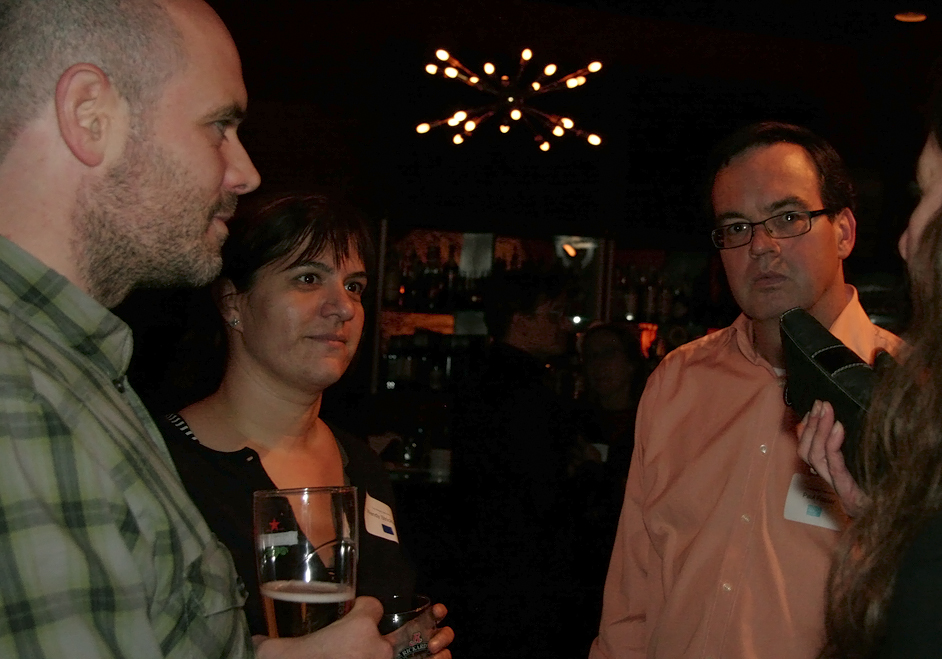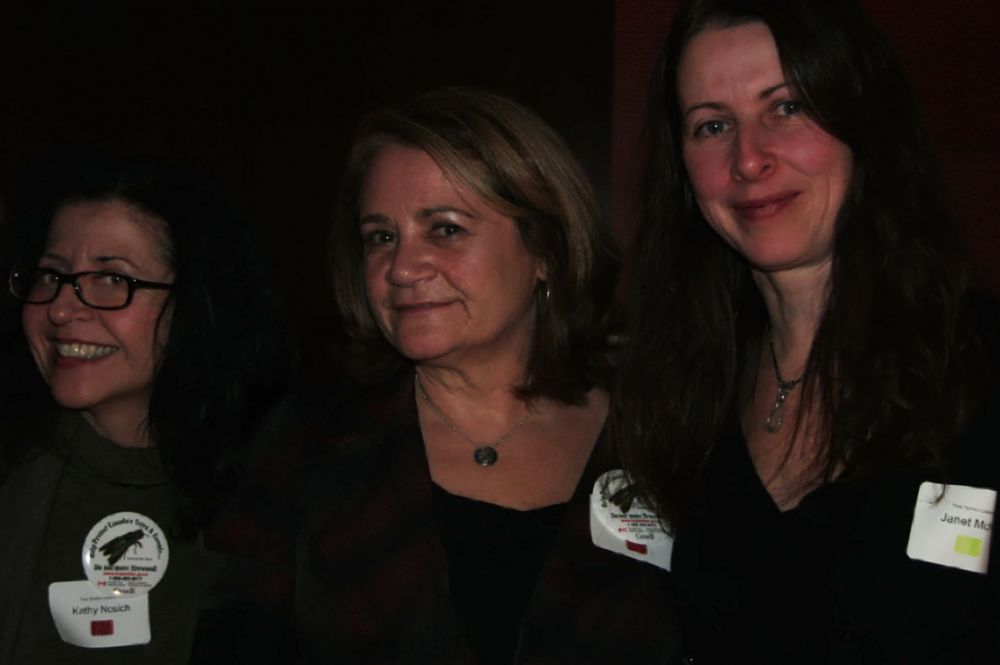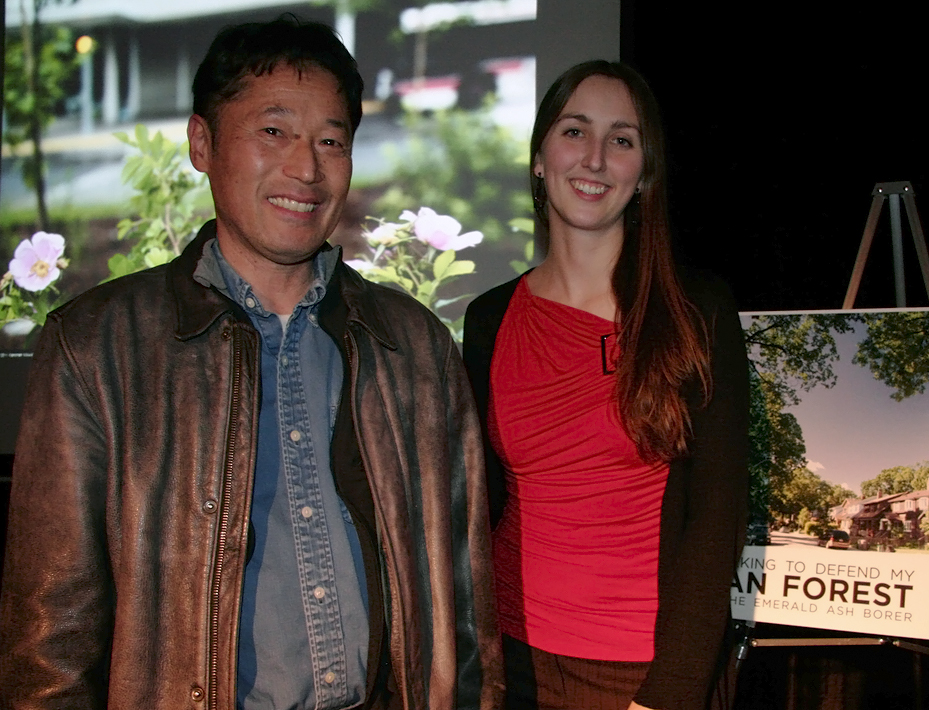Between planting trees to protect our watersheds and stewarding demonstration sites at some of the most urban areas in Canada's largest city, there were also a number of ambitious projects that inspired and impressed all of us here at LEAF HQ. That is part of the reason it was so nice to see so many faces, new and familiar alike, as they streamed into the Gladstone Hotel for our 2011 Tree Tender celebration.
Amongst all of the catching-up Beth McEwen, Toronto's manager of urban forest renewal, took the stage. This year we really began to see the effects of the Emerald Ash Borer (EAB) in our backyards and city parks, and as a professional who deals with the pest on a daily basis, McEwen gave some shocking examples of what exactly it means for our forest, and the steps that she and her colleagues are taking to deal with it. After flipping through her graphs and photos (dramatic before-and-after shots of ash-lined streets) and touching on some solutions (including hundreds of replants - in some cases "more than the current market can provide"), it seemed obvious she'd piqued a few questions.

As the discussion flowed from alternative uses for the waste wood of felled ash trees, to what differentiates the EAB from previous threats like Dutch Elm Disease (in short: it is faster and more devastating), I was blown away by the level of insight and creative thinking that filled the room. We had to eventually call an end to the formal question period and allow it to spill over into the lively conversations that followed. Fueled by personal experiences, hot coffee and cold beer these ran wild with new ideas, options and suggestions.

And across the room it was nice to see Kathy Nosich and Kathyrn Peck from Ontario Power Generation (OPG). The two had dropped in to say "hi" and get to know some of the grads in person. Through their Biodiversity Program, OPG supports the Tree Tenders Volunteer Training Program - without their commitment we wouldn't be able to achieve much of the important education and stewardship that we do. But they also felt a personal connection with the issue, both sharing their own stories of ash trees lost in action.

As a former grad, I was excited to see the energy around the room. Along with fellow course-mates, and folks I've met at mulching days and on tree tours, I had a few spontaneous conversations with guests that were completely new to LEAF. I listened to stories of loss and replanting - of trees replacing holes in the ground, but not the memories of what stood before. Trees are much better to have than to long for, and while they may be missed where they stand, they cannot be ignored when they fall.

Most of all I heard an overwhelming desire to make the urban forest a better place - to strengthen it and make sure this sort of thing doesn't catch us off guard once again. Biodiversity rang out almost as loudly as collective action as everyone pledged to help empower communities and defend their neighbourhoods. And as I looked around the room before the end of the night, I was glad to see so many people on our side.
